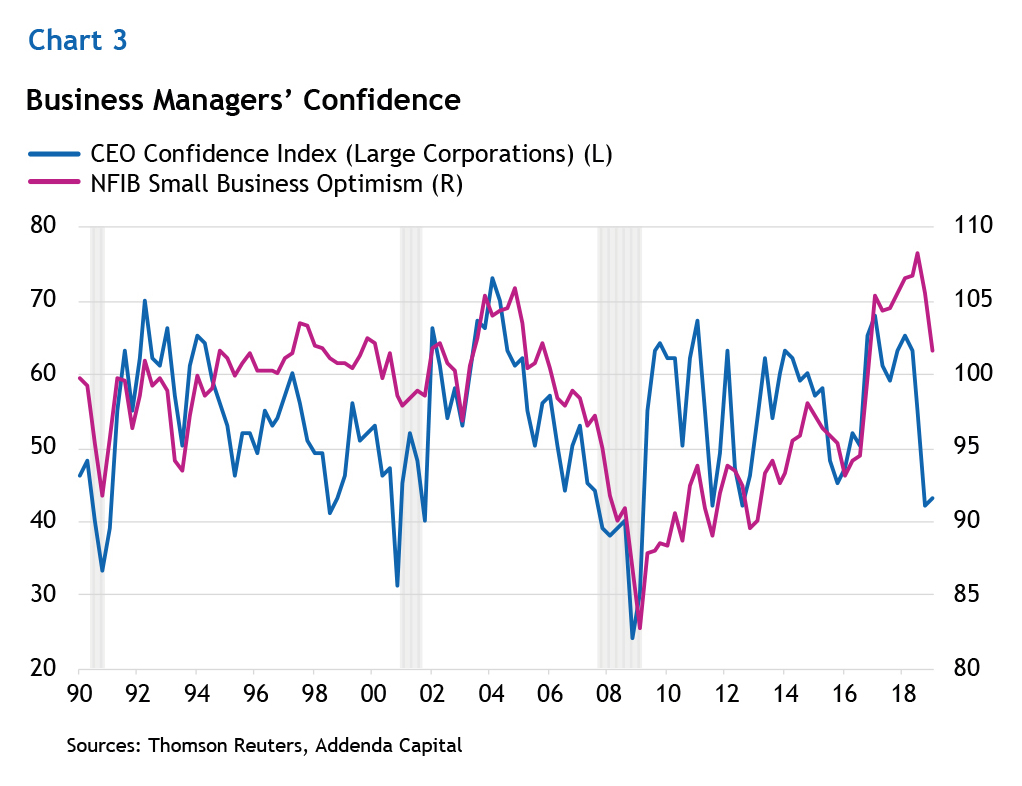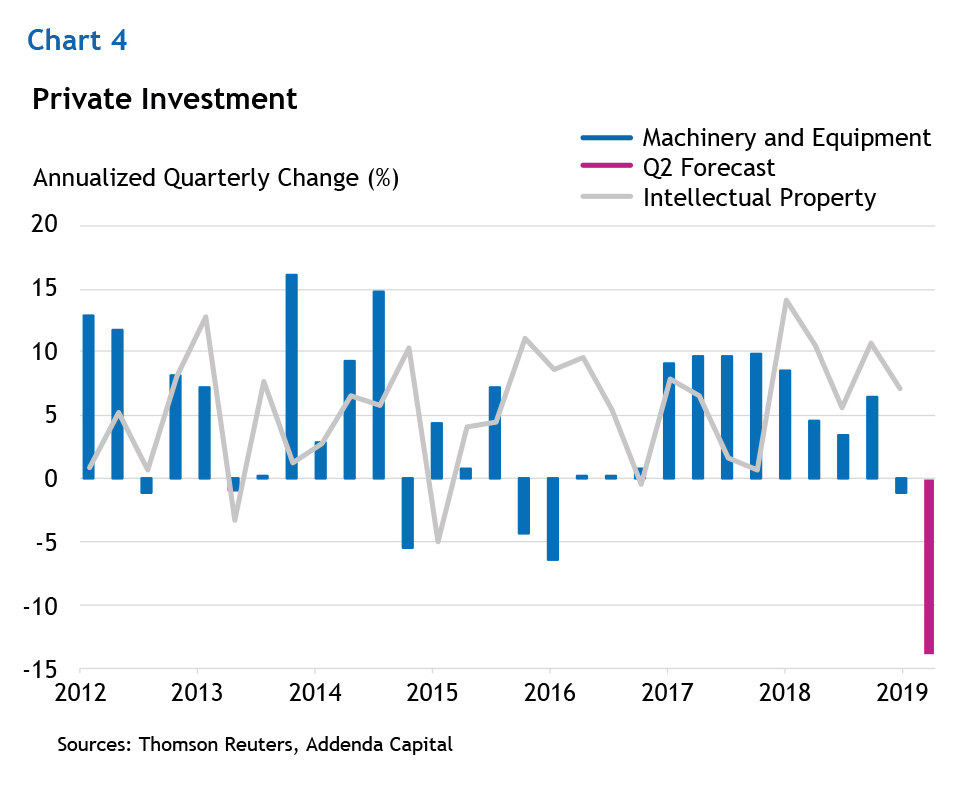Published on: June 26, 2019
Abdullah RahmanSenior Analyst, Business Intelligence and Quantitative Research
Since the U.S. mid-term elections, 2-year, 10-year, and 30-year Treasury bond yields have decreased
by 1.16%, 1.21% and 0.93% respectively. They currently stand at 1.81%, 2.03% and 2.53% (chart 1).
In the background, the Federal Reserve target rate stands at 2.375%, unchanged since the last December
hike. The current term structure extrapolates that the monetary policy rate will be reduced by 0.66%
by year-end 2019 and that the drop will amount to 1.0% by October 2020. At its June 19, 2019 meeting,
the Fed hinted that it might initiate an easing cycle soon. The market narrative underlying these moves
centers around two themes: the deleterious impact of the trade war on global growth and the fear
of a monetary policy error.


After providing nearly limitless support to pull the economy out of the Great Recession, the Fed decided
to raise the target rate back to its estimated neutral level, i.e. where it is neither restrictive nor simulative
for the economy. In early January, just a few weeks after the last hike in the target rate, the Fed assessed
that the rate now stood at the lower bound of its estimated band for the neutral rate. From there on,
it intended to patiently monitor the outlook before deciding on any further adjustments to rates.
Some bond investors remain convinced that the Fed overestimated the level of the neutral rate. They posit
that the last two hikes were uncalled for and risked triggering a recession. To this day, economic data does
not support the markets thesis. Rate hikes have indeed impacted some components of GDP: residential
investment and auto sales have been drifting for a few quarters but without additional weakness. When
monetary policy is truly restrictive and about to trigger a recession, these components collapse, which
is far from the current environment. Moreover, household consumption slowed in the first quarter but this
seems to have been weather-related. In the second quarter, with two months of data released, we estimate
that consumption has surged, which contradicts the thesis that rates are already dangerously undermining
growth (chart 2). From this evidence, the current level of rates does not seem to impede the extension
of the cycle.
The other theme, the trade war, remains a threat. Each tantrum of President Trump resulting in the
imposition of tariffs, retaliation and frequent escalation threats has undermined business leaders’
confidence. Here, a clarification is needed. It is the confidence of large corporations’ CEOs, which is
affected. As for small and medium-size businesses, typically more focused on the domestic economy,
the confidence of entrepreneurs remains on balance elevated. In terms of impact on the outlook, the drop
in confidence of large enterprise CEOs explains the setback of investment in machinery and equipment
in the first quarter, which seems to be deepening in the second quarter (Chart 4). This aggregate demand
component will subtract a lot from growth in the current quarter. Having said this, the United States enjoys
a large and diversified economy in which manufacturing jobs only represents 8,2% of total employment.
The net impact for the total economy would be a temporary growth pace slowdown.


The malaise currently afflicting international trade is a self-inflicted wound resulting from the United States
administration’s protectionist actions. This malaise will only dissipate if the protagonists decide to act and
defuse the conflict. In our opinion, the drop in confidence of large corporation CEOs and in the investment
momentum have nothing to do with the current posture of monetary policy.
This situation creates a significant dilemma for the Federal Reserve. Market pressure for the Fed to reduce
rates is very strong but decreasing rates may not be an effective remedy to restore business leaders’
confidence. At this advanced stage of the business cycle, it is even possible that this wrong prescription
could lead to problems for financial stability and future inflation. However, core inflation is currently
running at 1.8%, slightly under the 2.0% target and the central bank seems to fear that inflation expectations
could move even lower. Weak inflation persists because even if wages are increasing by 3.2%, the recent
productivity surge is keeping unit labour cost growth at close to 0%, which prevents inflation from reaching
its target. If productivity gains are sustained, cyclical inflation will stay dormant and the central bank’s
dilemma will persist. If not, the feared monetary policy mistake may not turn out to be the one markets
are pricing today.